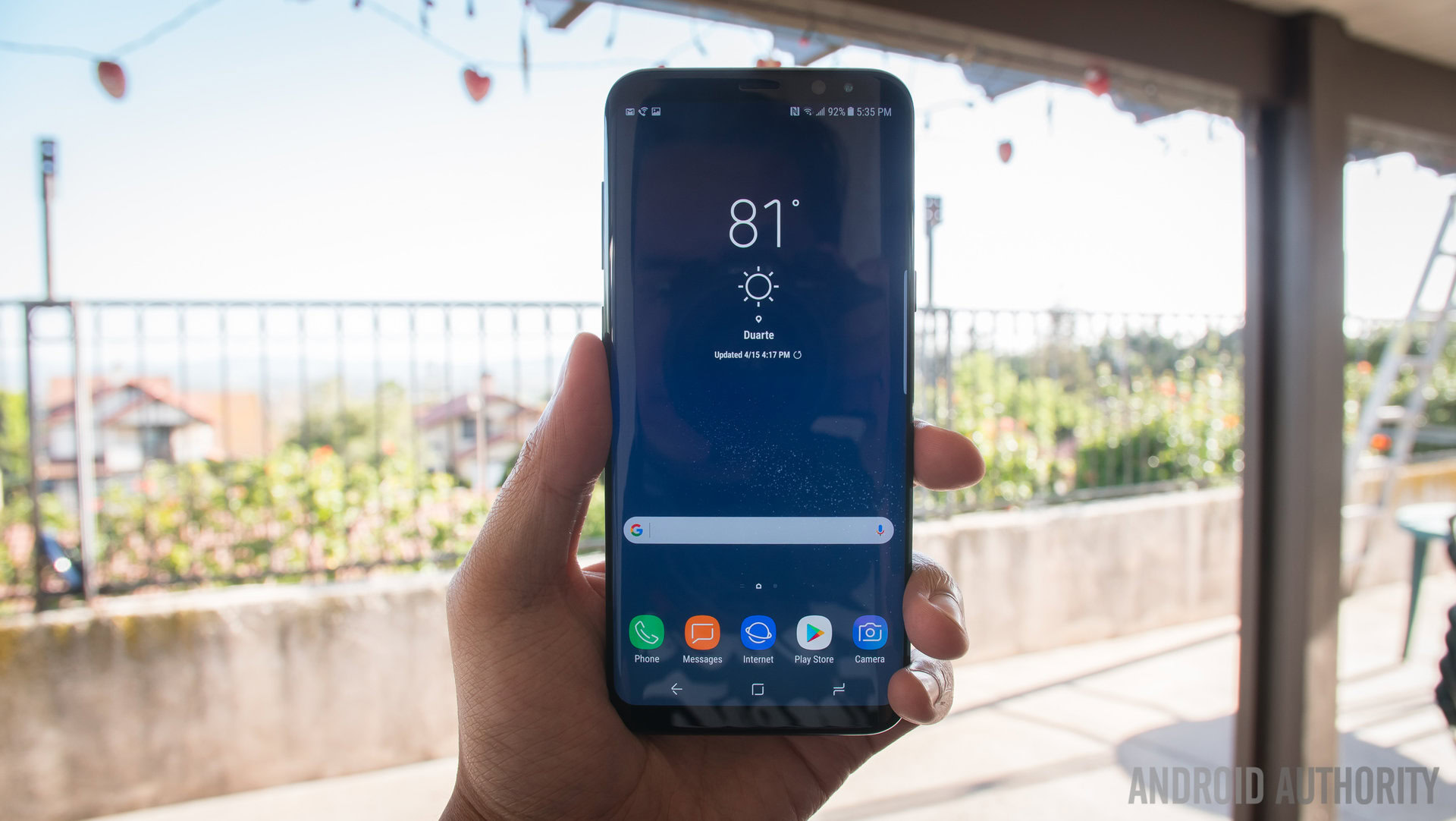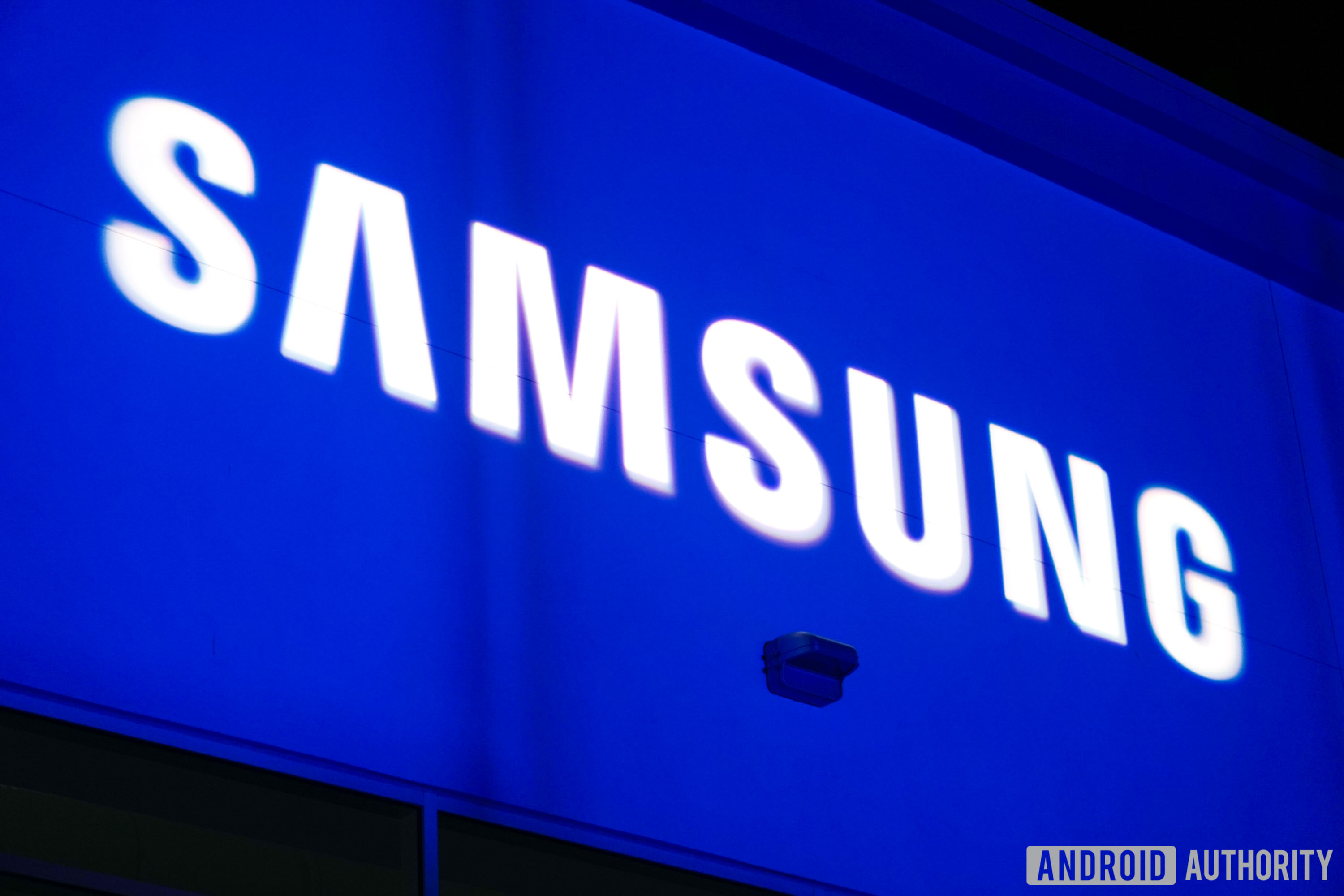ANDRIOD AUTHORITY

At the end of June, specs leaked for a new Samsung device that is likely to be its first phone running the “light” version of Android known as Android Go. Then, a few days ago, images of the alleged device also leaked.
The images of the leaked device depict a phone which appears to be running Android Go, but skinned over with Samsung’s proprietary version of Android known as Samsung Experience (formerly TouchWiz).
To be clear, there are no rules stating that Samsung (or any company) can’t skin over Android Go. But you know what? There should be, because skinning Android Go goes against the very point of the operating system.
#gallery-1 {
margin: auto;
}
#gallery-1 .gallery-item {
float: left;
margin-top: 10px;
text-align: center;
width: 33%;
}
#gallery-1 img {
border: 2px solid #cfcfcf;
}
#gallery-1 .gallery-caption {
margin-left: 0;
}
/* see gallery_shortcode() in wp-includes/media.php */
Why Android Go?
Android Go (also known by its official, cumbersome name, “Android Oreo (Go edition)”) is described by Google as such on its official website:
“A powerful experience for entry-level smartphones. It’s the best of Android, built with new and reimagined apps, so even the most affordable Android smartphones are as sweet as can be.”
Google’s intention with Android Go is to enable smartphone manufacturers to create incredibly inexpensive smartphones that can still handle Android’s core features. Along with the pared-down version of Android, there are “Go” editions of major apps, including Gmail, Maps, Chrome, and even YouTube.
But the way to keep Go smartphones cheap will be to use cheap hardware. As an example, the Alcatel 1X – one of the earliest Android Go phones to market, and the very first in the U.S. – has a meager 1GB of RAM, 16GB of onboard storage, a 480p display, and a 1.3GHz MediaTek processor, at an MSRP of $100.
To put that into perspective, the Samsung Galaxy S2 released in 2011 had similar specs at an MSRP of around $600.
Google’s push of Android Go is a win-win for both Google and OEMs, in that people who have never bought a smartphone before due to the prohibitive cost will gravitate towards a Go product. That means much-needed new market saturation for OEMs and further adoption of the Android ecosystem for Google.
But for that plan to work, the devices need to be fast, dependable, and safe, which makes skinning Android Go a bad idea.
Samsung Experience makes things more complicated

The aesthetics of any OEM’s Android skin are up for debate, but there’s no denying that the addition of new code and design language adds an extra layer of difficulty to running Android. Samsung Experience, in particular, is often criticized for being slower and less dependable than not only vanilla Android but also other, leaner OEM skins.
If Android Go is all about simplicity and keeping things “light,” how does skinning it help? It doesn’t, plain and simple.
But that likely doesn’t matter to Samsung. The company knows that Android Go is going to put smartphones into the hands of people who have never owned one before; in fact, in some cases an Android Go phone will be the first device a person has owned that connects to the internet. If those people see Samsung Experience as their first interaction with Android, they will be more likely to buy Samsung products again in the future.
Meet the new OS, same as the old OS
Although Samsung’s intentions are clear and understandable from the perspective of brand loyalty (and obviously making money), it’s missing the bigger picture. In this case, the big picture idea is that people who have never used a smartphone before are going to use a Go device first, and that experience needs to be utterly flawless.
If the experience is unsatisfactory in any way – whether because of hardware, software, connectivity, or whatever – the chances are good that the next phone they get won’t be from Samsung or possibly not even based on Android. With that in mind, skinning Android doesn’t help Samsung’s cause in the long run, even if it pushes brand awareness in the short term.
If Samsung were playing the long game, it wouldn’t bother trying to cram Samsung Experience on Go phones. Instead, it would try to push the limits of how powerful and dependable a Go phone can be, to really “wow” first-time smartphone owners. Include a solid camera in the phone, or maybe throw in a must-have feature that will cement brand loyalty to Samsung over any other company.
But skinning Android Go has the likely outcome of bringing the same fragmentation issues we have with “regular” Android. I’m specifically speaking about Android updates and security patches, which Samsung is notoriously slow about issuing.
How much easier will it be for Alcatel or other manufacturers of Go devices to update Android Go if it’s the basic stock edition? How much slower will Samsung be if it has to work Samsung Experience into those updates? Which devices will consumers eventually gravitate towards if that’s the case?
Google could prevent this by stepping in
![]()
There’s no question that the future of the smartphone market is in developing nations. People in developed countries already have smartphones, and we’re bored of them. We’ve moved on from smartphones being an “Oh wow, isn’t that amazing!?” thing to being a “This is just a part of my life” thing.
But developed nations will still be in the “wow” phase, and OEMs (and Google) have the chance to create a market for a second time, fixing the mistakes made the first time around. It’s in Google’s best interest for that to happen, but skinning Android Go is the first step towards repeating all the same mistakes. It has the power to stop it, but as of yet hasn’t flexed that power (at least as far as we know).
Why not? It’s not like Samsung isn’t going to release phones for the developing market. If Google says, “To use Android Go, it has to be the stock version and it has to receive timely updates for X amount of time,” what is Samsung going to do? Say no? Say that it doesn’t need to release an Android Go device in developing markets? That would be company suicide, and Samsung knows it. If Google says, “These are the rules,” then Samsung will have to oblige.
Now, there could be a deal on the books that we don’t know about. For all we know, Samsung and Google agreed to let Experience into the Go ecosystem because Samsung promised timely updates and to not interfere with the fundamentals of Android Go. Or, to go even further, Samsung may not be putting Experience on a Go phone at all; I am basing this entire article on leaked information, after all, so anything could be true at this point.
But I‘m a realist, and I understand that it’s likely that Samsung is loading Experience on a Go phone and Google isn’t putting any restrictions on it. It’s likely that Samsung will release its Experience Go phone and other OEMs will follow suit with their own skinned devices. It’s likely Android Go in the developing market will repeat all the same mistakes made with Android’s initial run.
But I have been wrong plenty of times in my life, and maybe I’m wrong about this. Maybe Samsung is playing the long game, and maybe Android Go won’t have the same problems as Android does today.
All we can do now is sit back, and see what happens.
NEXT: Google aims lower than Android Go with new $22m investment
Source: ANDRIOD AUTHORITY








